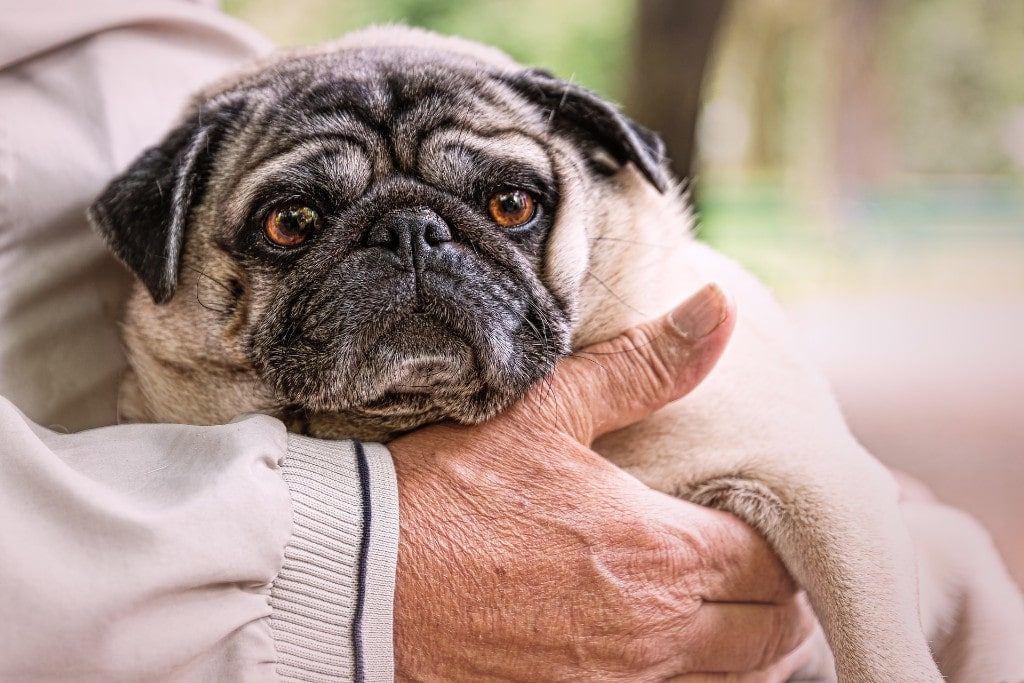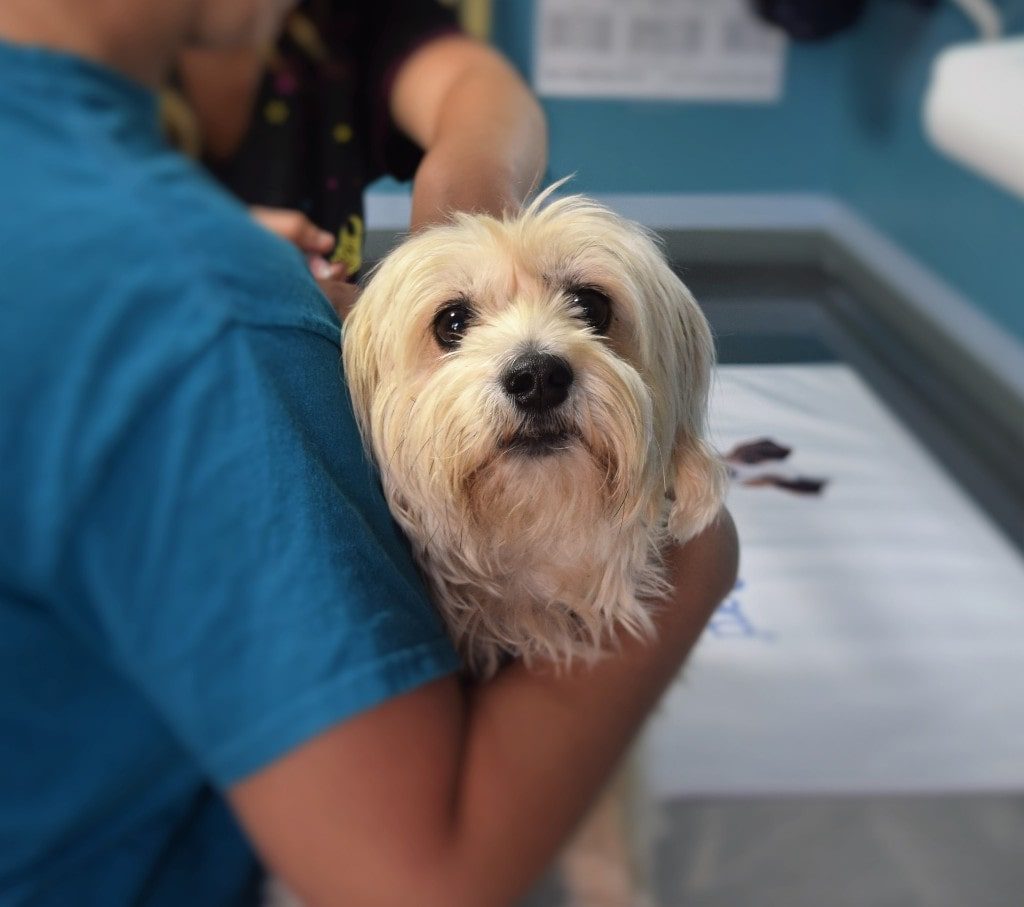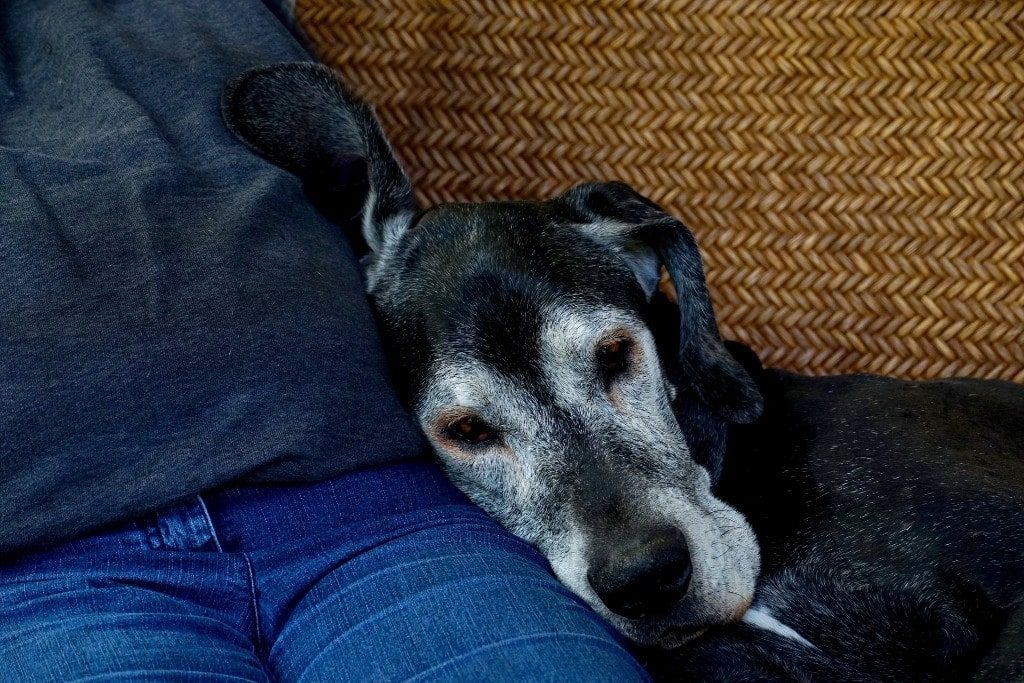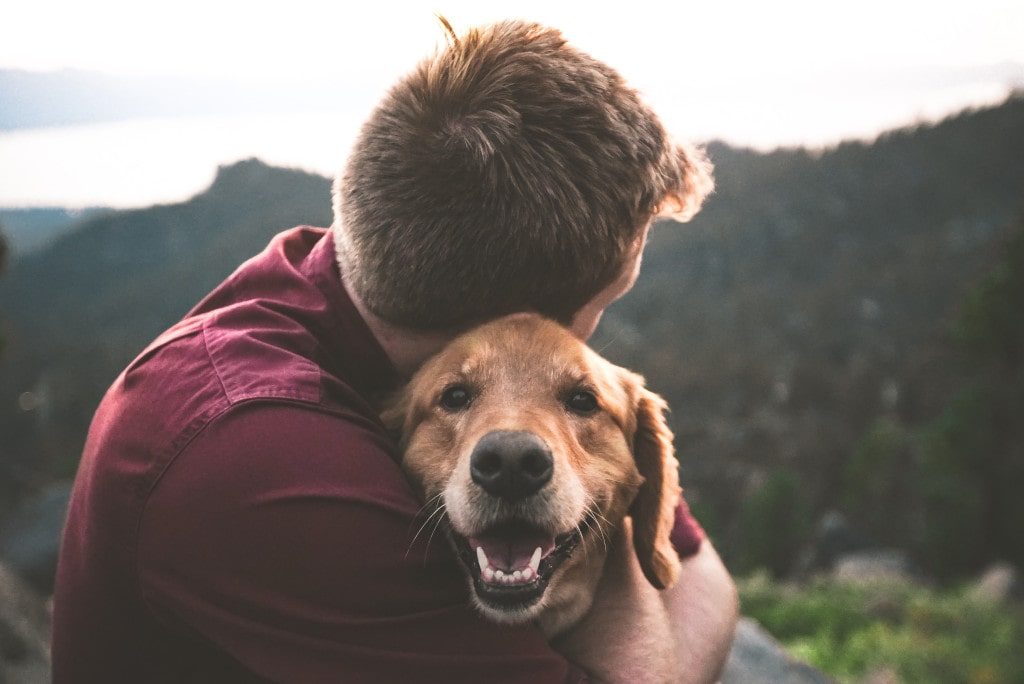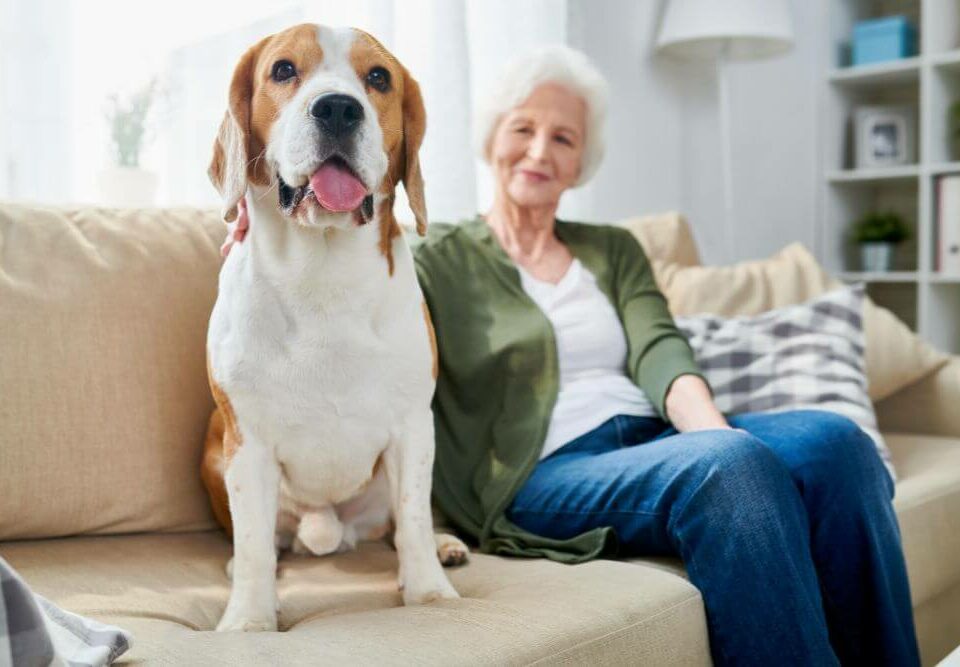
Dog Fever Causes Symptoms And Treatments
February 11, 2019
Don’t Let Your Old Or Sick Dog Become An Emergency Euthanasia
April 8, 2019Dog Euthanasia – All You Need to Know. As a dog lover, there is one thing which is almost impossible to come to terms with:
Your beloved canine companion, no matter how happy and healthy they are, is unlikely to live as long as you do.
Saying goodbye is something that every dog lover has in the back of their mind. We all dread the time when we start to realise that the day is finally approaching.
Knowing what to expect though, can make those final days just that little bit easier. This is especially true when your dog is approaching old age or is not enjoying the quality of life they were used to.
This means that you may soon have to make some truly heart-breaking choices.
What is dog euthanasia?
Euthanasia is defined as “ the practice of intentionally ending a life to relieve pain and suffering.”
In the case of animals, the phrases “putting a dog to sleep” or “putting a dog down” are slightly softer expressions referring to this gentle act.
When it comes to deciding whether dog euthanasia might be something you need to know more about, there are a few different perspectives to consider:

The Vet’s Perspective
Your Vet is an expert in animal health and welfare. This makes your Vet’s perspective important to get at a time like this.
Because, while Veterinarians tend to love animals in general, they have no decision-clouding emotional ties to your pet in particular.
Given these facts, their clinical opinion is an important aspect to involve and to support your decision. You know your pet better than anyone and you will know if their behaviour, demeanour or quality of life has changed or deteriorated.

The Pet Owner’s Perspective
Those emotional bonds between you and your pet are likely to be extremely powerful. So much so that they have been known, in some cases, to result in pet owners who are simply unable to say goodbye to their beloved companion. Even when they know that their companion may be actively suffering or have simply lost the lust for life.
It is usually only through the realisation that choosing to put a dog to sleep is saving them from having to endure further pain more than it is ending their life which allows most dog lovers to make the very difficult decision to end that suffering through gentle euthanasia.

The Pet’s Perspective
You may feel that your beloved pet is at times giving you signals that they are not happy or that maybe life is not as much fun as it was, our dogs are energetic and love exercise and social interaction, if that is missing your dog may be showing some signs of losing their lust for life, again the person that will understand this better than anyone else is you.
Conclusion – a general perspective on dog euthanasia
Most people would say that they would prefer to end their life peacefully (preferably in bed surrounded by loved ones at a ripe old age). It is a perspective which most people extend to their pets.
Our pets do not have an understanding of the process, they simply cannot worry that it’s going to happen, even though they may be showing some signs of distress due to illness, infirmity or other related issues. At-Home euthanasia is a gentle way to say a peaceful and dignified goodbye to your dog.
What is the average age for a dog to live?
The average age for a dog largely depends on how big they will become as an adult. This can, unfortunately, be as short as from 7-8 years for the largest dogs, but up to 15-16 years or possibly more for the smaller breeds.
While an “average lifespan” is no kind of barometer to use to judge whether or not your dog is healthy, it can be a useful indication of how long you might reasonably expect to enjoy their company.

Popular dog breeds with the longest lifespans – over 15 years
Some of the longest-lived dogs tend to include the following breeds:
- Lhasa Apso (15-20 years)
- Pomeranian (14-16 years)
- Scottish Collie (15-16 years)
There are also several other breeds which have an average lifespan of more than fifteen years:
- Australian Shepherd Dog
- Chihuahua
- Jack Russell Terrier
- Shih Tzu
- Toy Poodle

Popular dog breeds with a medium lifespan – 10-15 years
Dogs which tend to live for around fifteen years or less include individuals from popular breeds such as:
- Beagle (12-15 years)
- Dachshund (14-17 years)
- Golden Retriever (10-12 years)
- German Shepherd Dog (9-13 years)
- Labrador (10-12 years)
Other dog breeds who tend to have an average lifespan of between a 10 and 15 years include:
- Bearded Collie
- Border Collie
- Border Terrier
- English Cocker Spaniel
- English Setter
- Whippet

Popular dog breeds with the shortest lifespan – maybe under 10 years
Some of the most popular dog breeds which tend towards having shorter lifespans include:
- French Mastiff (5-8 years)
- Great Dane (6-8 years)
- Irish Wolfhound (6-10 years)
- Saint Bernard (8-10 years)
There are also a number of other breeds who tend to have shorter lifespans:
- Bernese Mountain Dog
- Bloodhound
- Bull Mastiff
- Great Swiss Mountain Dog
- Leonberger
- Mastiff
- Neapolitan Mastiff
- Newfoundland
- Rottweiler
- Scottish Deerhound

What your dog’s average lifespan can tell you
You cannot really use your dog’s expected lifespan to judge whether or not it is time to say goodbye. But a little bit of knowledge here can help you prepare yourself for when the day might come.
Whether with the knowledge that you will likely have a couple of decades together or whether you are going to have to fit a whole lot of love and living into a shorter space of time, one thing is for sure: any dog’s life will seem longer and happier – for them and for you – with plenty of exercise, a healthy diet, healthcare and generous portion of love!
Is my dog in pain or is it old age?
You are not alone in asking this. The “pain or old age?” question is a very common one amongst dog owners who have started to notice changes in their companion’s condition.
It is hard to provide a definitive answer. But remember, you know your pet best. You know what their life is like and if their behaviour has changed recently.
It is also useful to know, however, that there are several common signs that your dog may be in pain, as well as indications specific to certain breeds, many of which you will find listed below.
If you are concerned about your pet’s health, talk to your vet about Quality of Life Assessments.
The “look”
The “look” is that often spoken of, possibly mute expression of canine suffering. Many dog lovers say they can feel their dog letting them know that it is time to say goodbye with this look alone.
This is not something which can really be defined. The “look” is based on your deep emotional connection with your pet – the one where you or they sometimes know what each other is thinking. When it is time to go for a walk, for example, or to play fetch or that you need some affection!
This is not necessarily immediately clear to everyone. Yet in many cases, when people who have experienced a similar situation themselves say “you’ll know when it is time”, they are correct.
This can be a challenge because not every pet will give such a clear signal that they are ready to move on.
How can I tell if my dog is in pain?
There are several common indications that your dog may be suffering:
- Less keen to play or interact with you
- Show less interest in food or have started to drink less
- Have started sleeping or not sleeping a lot more than they usually do
- May start to be very vocal or very quiet, unlike their normal self
- Have started to struggle with bowel and bladder problems
- You’ve noticed changes to their character – they may appear dazed, confused or easily riled
- May experience problems with balance, mobility or find it difficult to stand up or sit down without help
How can I know for sure?
Of course, there can be numerous causes for any of these symptoms. Equally, it is important not to judge our pets just with human values when evaluating any of their behaviours:
You might think that certain behaviour tells you that they are happy, sad or angry, however, they might be expressing or trying to hide the fact that they are really in discomfort.
The best way to know for sure is to talk to a veterinary clinic about Quality of Life. Here’s a short-form Quality of Life Assessment Checklist to get you started.
Potentially terminal illnesses in dogs
Older dogs, in particular, are prone to certain types of illnesses, which may not be curable. Three common conditions are:
- Cancer
- Heart failure
- Renal (kidney) failure
Sadly, in these cases, there is often not much that can be done. Knowing a little more, however, can help you be prepared:
1) Dog cancer
If a dog develops cancer, it will tend to be in the later stages of their life.
Much like in humans, the treatments which are currently available to treat cancer in canines are not very pleasant for the recipient. Especially if your dog is older, you will be faced with an incredibly difficult, deeply personal choice:
On the one hand, you have a treatment which is potentially long, painful and uncomfortable for your companion – as well as one which can be very expensive.
On the other, you will know that they really are approaching the end of their life and they are in constant pain.
This is one of those situations where you may have to give consideration to your companion’s Quality of Life.
2) Heart failure in dogs
There are two different ways in which heart failure can affect dogs:
The first is a sudden event which overwhelms their heart. This may be comparable to a human “heart attack” but not really the same thing. While sometimes desperately sad, this is usually over very quickly.
The other way in which dogs can suffer heart failure is more like a slow erosion of their heart’s ability to pump blood around their body. This will eventually make it very difficult for your dog to even manage to get out of bed.
It is usually during this latter time whereas a caring pet owner it is sensible to talk to a clinic and discuss the possibility of euthanasia.
3) Kidney failure in dogs
Kidney failure is another common side-effect of old age in dogs. With a rapid response, treatment and ongoing care, it may not necessarily be terminal.
Kidney failure is another common side-effect of old age in dogs. With a rapid response, treatment and ongoing care, it may not necessarily be terminal.
However, it is always important to bear in mind your companion’s quality of life is likely to deteriorate in these instances.
Much like with cancer, the treatments for renal failure can be, at best, uncomfortable and – at worst – very painful for your pet. It may also only extend your dog’s life for a short period of time, during which they may continue to be in pain.
Arriving at the decision to euthanise your dog
Rarely will you need to make the heart-wrenching decision to have to say goodbye to your dog alone.
In fact, it is very important indeed that you collaborate with your veterinary clinic to find the best solution for your pet. You may also wish to ask other members of your family and friends what they think about your situation.
In almost every case, it will come down to you answering some important questions about the way your pet is currently able to live their life:
- Are they still interested in eating and drinking?
- Do they still sleep and get revitalised by rest in the way that they used to?
- Can they move around without too much discomfort?
- Do they still greet you and notice that you are there?
- Can they manage to get up and go somewhere to relieve themselves?
Other Signs
You may also notice a number of other signs that your pet is suffering discomfort in their daily life. This could include vomiting, a strong desire to hide from you or the inability to eat anything at all.
Having a Veterinarian help you and your family make this next to an impossible decision is important and supportive.
In fact, setting yourself a time frame to see if milder symptoms improve may be the way to figure out whether these are short-lived or simply the way your dog will experience life from now on. In the latter case, euthanasia may be the only choice to avoid them living a life filled with pain.
It is worth remembering that living with a dog who is going through a chronic or terminal illness can be very difficult for you as well, both emotionally and financially. You may have to devote significant time to caring for them and it is unfair to leave them alone for extended periods as they may need assistance standing up or their emptying bowel and bladder.
Whether your dog has experienced a sudden and unexpected event or accident which has led to a rapid deterioration in their health or whether you have noticed a slower erosion over time, never forget to consult your Veterinarian when you are considering the best options for your pet. Your one guiding principle should always be to do what is best for your dog.
A week too early is better than a day too late
This is a rule which many dog owners who, like you, have deep connections with their pets, find easy to understand – and very difficult to put into practice.
Most Veterinary healthcare professionals will tell you that they would rather put down a seriously ill pet a week too early rather than a day too late.
There is a reason for that:
- Looking back, many pet owners say that they feel they may have waited too long to say goodbye – that they let their own feelings of impending grief and an unwillingness to let go cloud the fact that their animal companion was suffering, it is important not to let an end of life illness become an emergency if this can be avoided.
- Leaving aside the increasingly expensive cost of treatments which can extend your pet’s life, it is always the quality of life which needs to be considered. Irrespective (as much as humanly possible) of the way you feel about losing a treasured companion.
The process of dog euthanasia – what actually happens
Dog Euthanasia – All You Need to Know. In many ways, reaching the decision to say goodbye to a beloved animal member of your family is the hardest part.
Yet it is still a good idea to have an appreciation of what will happen during the actual process of dog euthanasia:
1) Before euthanasia – get prepared
The first thing you will need to do is prepare yourself for what is to come. You will, no doubt, have some things which you will want to try and do with and for your companion one last time.
These usually amount to three things:
i) Saying thank you
Your companion has meant a lot to you. They have also done a lot for you. Many people feel the need to thank them for that. Tell your canine friend how grateful you are, what a good boy or girl they are and all of the things you have enjoyed doing together in the life you have shared.
ii) Sharing your favourite things one last time
It might also not be too late to do some of those favourite things again. You could visit their favourite place together – even if you have to carry them every step of the way – or give them their favourite snack.
If you are worried that this might give them an upset stomach, you can wait until the last possible moment to do it. Many Vets even suggest providing a favourite snack as a distraction and last reward.
iii) Saying goodbye
Giving yourself, your family and friends the time to properly say goodbye is important. You do not want to drag out your pet’s suffering for a moment more than necessary, of course. But giving everyone who knew and loved your companion the time to say goodbye is – if at all possible – a very good thing to do.
Some people even Skype or FaceTime in their friends and family members who cannot be present to give them the chance to say a loving farewell.
2) Should you stay with your dog during euthanasia?
There is no right or wrong answer to this question:
Some people find they cannot bring themselves to be present. Others cannot imagine being anywhere else.
What is for sure is that it is always going to be better for both you and your pet if you can make decisions such as this in privacy. That is why having your Vet visit you at home is always going to be the best choice.
Your pet will feel less stress in the secure and familiar environment of their own home, this is where they and therefore you will feel most comfortable and where you can choose to be there or not as you decide, this makes everything a bit easier for everyone involved.
Thanks to their experience, your Vet will know that there is every chance that even those who initially decide they cannot face it may change their mind when the moment finally arrives.
They will make sure you have the opportunity to say a peaceful goodbye.
3) Dog euthanasia – how it actually happens
The most important thing to bear in mind when studying these details is that the gentle euthanasia starts with sedation, which means that your dog will gently fall asleep. You can choose where the sedation and euthanasia take place. When your pet is comfortable the Vet will start with a small sedative injection, when your pet gently falls asleep the Vet will wait for your instruction to continue with the euthanasia. Your pet will not feel a thing as they gently pass away for the final time. Your Vet will inform you of everything that is happening.
Do dogs suffer when being put to sleep?
Your dog will not suffer when they are being put to sleep. The gentle at-home euthanasia starts with sedation, which means that your pet will be sedated and asleep before the euthanasia process continues.
If you have ever had a sedative yourself, you will know that there can be a certain feeling of dizziness immediately afterwards. Experiencing this may make your dog give a little whine. It will only last for a second or two though. After this, they will become calm and gently fall asleep.
Towards the end of life there may be some bodily or muscle movements, this is not unusual and is not a cause for concern, your pet will not feel any pain after the sedative has taken effect.
For you, as their beloved family member, these actions can be a little disturbing. But from your pet’s point of view – and it is their experience that is most vital to consider here, remember – they have already moved on and are not aware of such muscle or bodily movements.
If there are any unexpected events during the procedure, which is very unusual, your Vet will keep you informed and updated during the whole process.
What happens after dog euthanasia?
Dog Euthanasia – All You Need to Know. On a practical level, most people will choose to allow their Vet to arrange for pet cremation. There are two main options:
- Communal pet cremation – this commonly happens jointly with other dogs so you will not be able to get the ashes returned to you.
- Individual pet cremation – this option is more expensive but you can choose to have the ashes returned to you in a casket, urn or memorial of your choice.
You might also choose to bury your companion. Do be aware though that there are Local Authority regulations that you need to make yourself aware of.
Paw prints, cuttings of fur or similar memorials can also be arranged by the crematoriums.
Do not underestimate the grief of losing a pet
The loss of a pet can be devastating Your Vet will be used to this too, so there is no need to hold back. You will find that Vets love animals as much as you do. They will understand.
These feelings do not often just disappear the next day, either. How individual pet owners cope with grief varies as much as people do. But reactions of sadness or loneliness are common – as are feelings of anger that they were taken from you too soon in such sad circumstances.
Sometimes you may need the help and support of a pet bereavement counsellor. Do not underestimate the need or the support that can come from bereavement counselling, your vet clinic will be able to recommend bereavement counselling, it could be a sensible way to get through the grief of losing a loyal companion.
Dog Euthanasia – All You Need to Know

